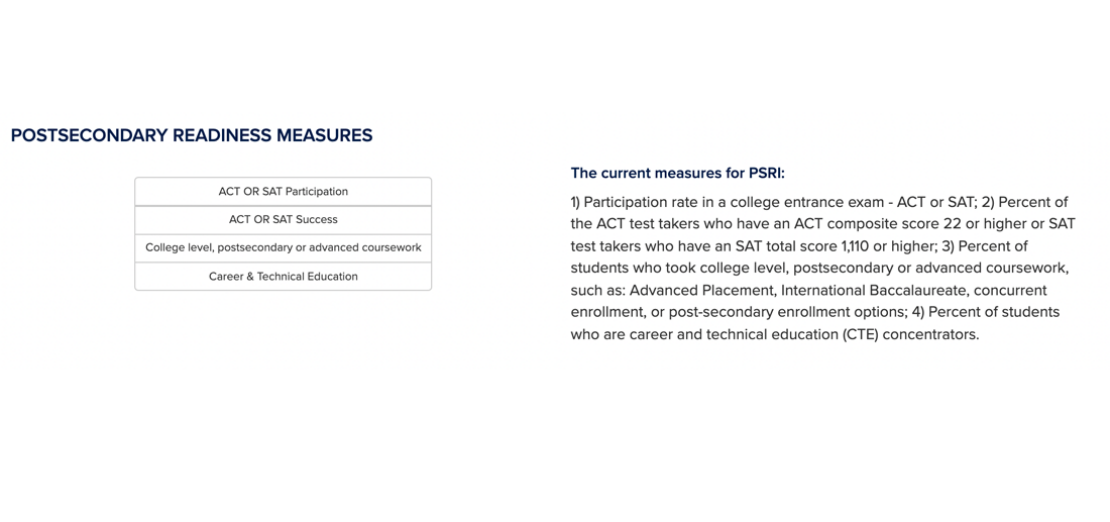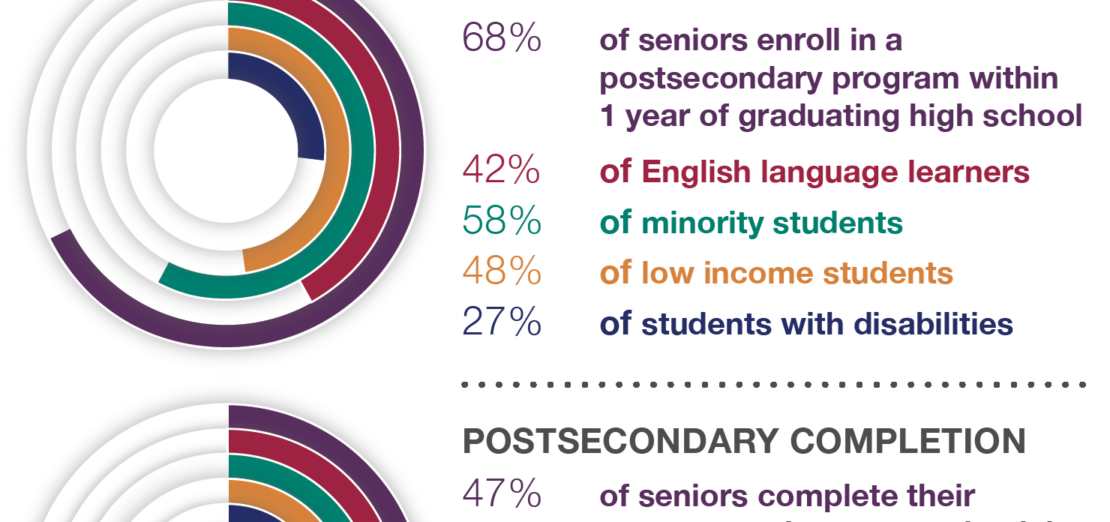
AEA PREP
College. Career. Future Ready. Iowa’s AEAs helping to solve Iowa’s workforce challenges.
Postsecondary
2 or 4-year degrees, certificate/license programs, apprenticeships, military, & industry
-
Increase the number and percentage of Iowa high school graduates who pursue and complete a postsecondary credential
-
Expand relationships with postsecondary institutions to ensure seamless and successful transitions from K-12 to higher ed
-
Enhance partnerships with local employers, business/industry to connect to apprenticeships and on-the-job training programs
-
Support Iowa's Network Intermediaries and their connections between and among local workforce needs, employers, and schools
The Data
AEA PREP partners with various agencies to provide a series of reports and interactive dashboards. These include PREP Trendlines, PREP Dashboards, and FAFSA Completion Reports

Iowa leads the nation in high school graduation rate, which has climbed steadily over the last decade. However, as the percentage of students graduating high school grows, an increasing number of students exit high school without a plan to pursue any form of postsecondary credential. Additionally, the number of students actually enrolling in postsecondary programs that lead to a degree or credential is also declining. These numbers illustrate how important and necessary it is to build working partnerships, focused on data, to improve outcomes for students and to meet Iowa’s workforce demands and the Future Ready Iowa goal that 70% of Iowans will have some form of postsecondary education or training.
-
~25% of HS graduates lack postsecondary plans
-
36% of HS graduates do not enter a program
-
~30% who enter a program do not complete
-
<50% of HS graduates complete a program
Resources and additional links
Check out the following links to AEA PREP's partners in postsecondary outcomes
Readiness
Students acquire necessary knowledge, skills, and strategies to succeed in postsecondary.
-
Expand relationships with K-12 schools to ensure seamless and successful transitions to postsecondary
-
Support schools in creating opportunities for students to acquire practical transition skills between K-12 and beyond
-
Assist schools in analyzing outcome data; assess overall student readiness to successfully pursue and complete a credential
-
Connect schools to local employers and business/industry through the Iowa Clearinghouse for Work-based Learning
The Data
AEA PREP assists districts in accessing and analyzing various readiness data. These include the Iowa School Performance Profiles (ISPP) and the Postsecondary Readiness Index
Iowa School Performance Profiles

Iowa students demonstrate readiness in several ways, including academic content knowledge, transition skills, learning and cognitive strategies, and self-understanding and engagement. While most students meet Iowa’s academic proficiency standards, less than 40% meet college and career readiness benchmarks in both reading and math. Those students enter into costly and time-consuming developmental education pathways. Additionally, with Iowa’s student to counselor ratio of 411:1, students often lack access to essential counseling and advising support needed to set and achieve postsecondary transition goals. The American School Counselor Association recommends 250:1, and Iowa Code indicates districts should work toward no more than 350:1. Students must be prepared academically, socially, and emotionally, and schools must work to ensure equitable access to transition supports for all students.
-
<40% of Iowa HS graduates are college ready
-
12% of Iowa students w/IEPs are college ready
-
3% of Iowa schools: counselor ratios < 250:1
-
28% of Iowa schools: counselor ratios < 350:1
Resources and additional links
Check out the following links to AEA PREP's resources on readiness
Equity
Focus on narrowing postsecondary outcome gaps among subgroups
-
Increase equity of Iowa high school graduates who pursue and complete a postsecondary credential
-
Support equity among first-generation students, IEP students, students of color, and students from low-income households
-
Establish partnerships with organizations focused on populations traditionally underrepresented in higher education
The Data
AEA PREP assists districts in accessing and analyzing equity outcome data. These include disaggregation on the Postsecondary Readiness Reports (PRR)
Post Secondary Readiness Reports

Equity gaps in postsecondary readiness and success exist among all subgroups in Iowa. While these gaps begin to surface much earlier than at high school graduation, there are even larger gaps in those choosing to pursue a postsecondary program (intentions), those actually enrolling in a program, and subsequently, those successfully earning a credential or award. There are thousands of students in these groups that graduate Iowa high schools each year. Readiness indicators must be considered early on in these students’ school careers so that they can all graduate ready for postsecondary success.
-
1,100 English language learners graduate HS
-
6,900 minority students graduate HS
-
11,000 low income students graduate HS
-
3,300 students with disabilities graduate HS
Resources and additional links
Check out the following links to AEA PREP's partners to support equity in postsecondary outcomes
Partnerships
Enhance partnerships with all future ready stakeholders
-
Engage with K-12 schools, institutes of higher education, and workforce development
-
Ensure partnerships are mutually beneficial and focused on postsecondary attainment outcomes
-
Support data-sharing agreements and partnerships that foster trust among all stakeholders
Resources and additional links
Check out the following links to AEA PREP's partners in postsecondary outcomes

Iowa State Longitudinal Data System
The federal Statewide Longitudinal Data System (SLDS) grant program is designed to help state education agencies develop and implement longitudinal data systems. These systems are intended to enhance the ability of states, districts, schools, and teachers to make data-driven decisions to improve student learning, as well as facilitate research to increase student achievement and close achievement gaps.






















